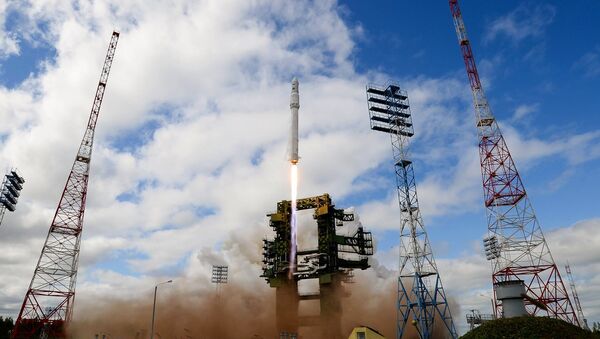PLESETSK, August 27 (RIA Novosti) – The Russian Defense Ministry has decided to stop using the Rokot light rocket carrier from 2016 because of its reliance on imported parts and will switch to the Soyuz and Angara carriers, Aerospace Defense Forces commander Lt. Gen. Alexander Golovko said Wednesday.
“Today the launches of the Rokot rocket carriers are used in the interests of the Defense Ministry within the framework of the space program and international cooperation programs. In the interests of the Defense Ministry there will be four launches, three in 2015 and one in 2016. Afterwards, the Defense Ministry may complete its tasks using the Soyuz-2 and Angara light rocket carriers,” Golovko told Russian Defense Minister Sergei Shoigu.
Shoigu said that the change would mean that Russia “would no longer depend on [parts] imports for light-class rocket carriers.”
Back in March, in response to Crimea’s reunification with Russia, the United States and the European Union introduced a package of targeted sanctions against Russia.
As the Ukrainian crisis escalated, the West continued groundlessly accusing Moscow of meddling in Ukraine’s internal affairs. The United States introduced several new rounds of sanctions targeting Russia’s defense, energy and banking sectors, and persuaded its allies to add Russian individuals and entities to their own blacklists.
Amid growing international tensions, many high-level Russian officials argued that the country should rely on its own resources and technology.
"Currently we are seeking practical measures but I think it would be better to first count on our own technologies and produce what is really necessary and beneficial for our defense industry," Russian Deputy Prime Minister Dmitry Rogozin said in April.
Soyuz-2 is a Russian three-stage carrier rocket developed for delivering payloads into Earth’s orbit. It can carry a payload of 7,800 kilograms there and 4,500 kilograms into higher orbits.
The Angara family of space-launch vehicles is designed to provide lifting capabilities of between 2,000 and 40,500 kilograms into low Earth orbit. It has been in development since 1995.

